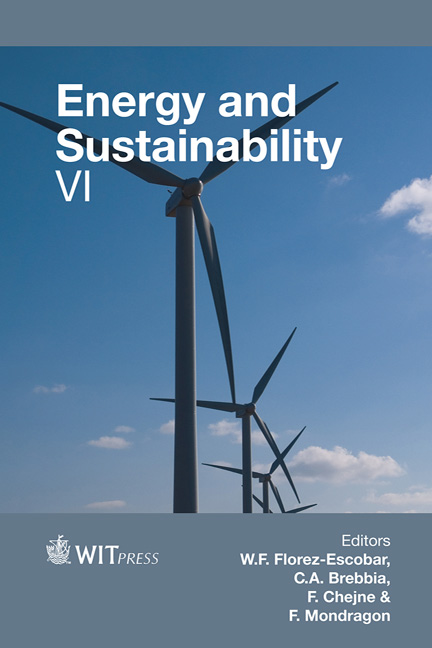Study On Catalytic Pyrolysis And Efficient Gasification Of Cellulose As Biomass Samples
Price
Free (open access)
Transaction
Volume
195
Pages
12
Page Range
27 - 38
Published
2015
Size
952 kb
Paper DOI
10.2495/ESUS150031
Copyright
WIT Press
Author(s)
Q. Wang, T. Watanabe, R. Ogawa, P. Aparu, K. Sugiyama
Abstract
Fossil fuels such as petroleum and coal will be exhaustible energy resources in the near future. From the point of view of the depletion of fossil resources, the development of renewable resources is required for a future sustainable society. Therefore, in recent years, renewable biomass, which is ubiquitous throughout the world, has attracted attention. Many studies on the application of waste woody biomass have been focused on non-edible biomass. Pyrolysis and gasification technologies have been known as the effective energy conversion technologies of biomass because of the various gases production such as synthesis fuel gases and chemical basic compounds. In the pyrolysis process, gases, condensable hydrocarbons so-called “tar” and solid carbon contents namely “char” will be produced. During the subsequent gasification process, char will usually react with the gasifying agents at a high temperature of above 900°C to produce the synthesis gases. However, there are many problems caused from generated tar during the pyrolysis process such as clogging of the piping and corrosion in the reactor. In order to perform efficient pyrolysis and gasification, there is still less information about the catalytic method although it has been widely used. In this study, we investigated the influence of iron and potassium as the catalysts on the pyrolysis process and the gasification process using an impregnation method to introduce these catalysts into the cellulose samples which is the major component of woody biomass. From the pyrolytic results, it was shown that the production of char and yields of gases were increased with the tar decrease in the presence of the catalytic metal species. Potassium catalyst seemed to especially increase the char yields. It may be caused by the decrease of crystal characteristics of the cellulose in the presence of catalytic metal species. According to the results of the gasification, a lower temperature for gasification from 800°C was found when an iron catalyst was introduced into the cellulose samples, whereas the higher temperature for gasification above 900°C was determined using the potassium catalyst introduced into the cellulose samples. Furthermore, with the help of the introduction of both potassium and iron catalysts, efficient pyrolysis and gasification were performed.
Keywords
biomass, pyrolysis and gasification technologies, cellulose, catalyst, impregnation method, char, tar





